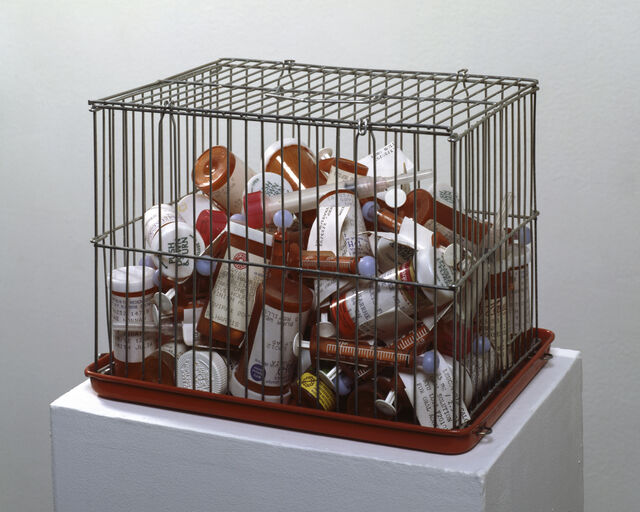Presented by The Shelley & Donald Rubin Foundation at The 8th Floor Gallery in 2016, In the Power of Your Care explored the shortcomings, limitations, and political issues surrounding healthcare. The exhibition addresses the identities of those experiencing different forms of health crises such as cancer, HIV, the ban on blood donations from gay and bisexual men, institutionalized care and more. Artists Jo Spence and Terry Denne’s collaboration, Picture of Health: How Do I Begin?, from 1982-83 portrays Spence wrapped in a white sheer cloth with a single ‘X’ over her left breast, marking her future mastectomy. The color photograph reclaims her body from illness. In Arena, a painting by Frank Moore from 1992, the artist depicts the surreal, other-worldly, and circus-like quality. Set within a circular maze-like construction, skeletons of people and animals, doctors, patients, diagrams, spiritual deities and observers. The image connotes a cynical view of medicine in which the patient is at the mercy of the doctors and on display for others. The exhibition drew attention to the experiences of individuals currently or previously going through medical crises, injustices, or life shifts. The exhibition points out the ways healthcare shapes our society and calls for changes in the policies that block us from humane care for all.

Picture of Health: How Do I Begin? by Jo Spence and Terry Denne. 1982-83. Image courtesy of Artsy.
Arena by Frank Moore. 1992. Oil on canvas. Image courtesy of Artstor.













